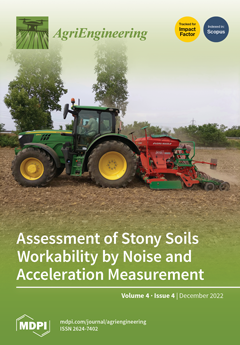Open AccessFeature PaperArticle
Pesticide-Free Robotic Control of Aphids as Crop Pests
by
Virginie Lacotte, Toan NGuyen, Javier Diaz Sempere, Vivien Novales, Vincent Dufour, Richard Moreau, Minh Tu Pham, Kanty Rabenorosoa, Sergio Peignier, François G. Feugier, Robin Gaetani, Thomas Grenier, Bruno Masenelli, Pedro da Silva, Abdelaziz Heddi and Arnaud Lelevé
Cited by 7 | Viewed by 3287
Abstract
Because our civilization has relied on pesticides to fight weeds, insects, and diseases since antiquity, the use of these chemicals has become natural and exclusive. Unfortunately, the use of pesticides has progressively had alarming effects on water quality, biodiversity, and human health. This
[...] Read more.
Because our civilization has relied on pesticides to fight weeds, insects, and diseases since antiquity, the use of these chemicals has become natural and exclusive. Unfortunately, the use of pesticides has progressively had alarming effects on water quality, biodiversity, and human health. This paper proposes to improve farming practices by replacing pesticides with a laser-based robotic approach. This study focused on the neutralization of aphids, as they are among the most harmful pests for crops and complex to control. With the help of deep learning, we developed a mobile robot that spans crop rows, locates aphids, and neutralizes them with laser beams. We have built a prototype with the sole purpose of validating the localization-neutralization loop on a single seedling row. The experiments performed in our laboratory demonstrate the feasibility of detecting different lines of aphids (50% detected at 3 cm/s) and of neutralizing them (90% mortality) without impacting the growth of their host plants. The results are encouraging since aphids are one of the most challenging crop pests to eradicate. However, enhancements in detection and mainly in targeting are necessary to be useful in a real farming context. Moreover, robustness regarding field conditions should be evaluated.
Full article
►▼
Show Figures





